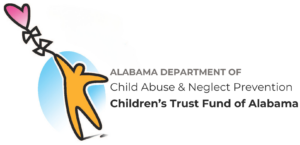In 2018, cigarette and smokeless tobacco companies spent a total of $25 million each day on marketing.[1] Whether you realize it or not, every time you use a social media platform or online search engine, you are being targeted by online advertisements and marketers. Marketing is a powerful tool, and it can be used for good and for bad.
Unfortunately, numerous documents released in various industry-related lawsuits exposed the questionable marketing tactics used by tobacco companies. These documents prove that companies viewed teenagers as young as 13 years old as a target demographic – and that they studied the smoking habits of young people in this age group to develop marketing materials targeted at youth.[2]
Take Phillip Morris, for example, a cigarette company that was the target of an internal investigation regarding their marketing techniques. The following quote was found in their internal marketing documents.
“Today’s teenager is tomorrow’s potential regular customer, and the overwhelming majority of smokers first begin to smoke while still in their teens…The smoking patterns of teenagers are particularly important to Philip Morris.”[2]
Today, Phillip Morris is still among the largest tobacco companies in the nation. They even have a minority stake in JUUL, a popular vaping device company that has also been under public scrutiny for their own deceptive marketing tactics aimed at youth.[3] Unfortunately, this is the nature of the tobacco industry.
 A Brief History of Cigarette and Tobacco Marketing
A Brief History of Cigarette and Tobacco Marketing
Cigarettes were smoked by people in the United States as far back as the early 1800s. However, it was not until the early 1950s when peer-reviewed medical journals found a connection between smoking and lung cancer. These findings rapidly spread throughout the medical community as well as in the media.
The increasing health concerns about cigarette smoking put the tobacco industry in crisis mode. The tobacco industry began to launch a new advertising strategy that aimed to condemn and question the scientific findings that were threatening the future of the industry. According to an essay published in the National Library of Medicine, “the goal was to disrupt the normative processes of knowledge production in medicine, science, and public health.”[4] In other words, the tobacco industry would go to any lengths to profit off of their products – even at the expense of their customers’ health. Instead, the industry viewed smoking as an “individual” risk – one that is made at the discretion of the smoker.
Why Cigarette Companies and The Tobacco Industry Take an Interest in Youth
Very few people start smoking cigarettes with no outside influence. In response to those that do, the industry blames peer pressure for being the number one contributing factor to children smoking. However, internal documents studied by the World Health Organization (WHO) contradict these claims.
According to the WHO, the tobacco industry knows that very few people start smoking in their teenage years without aggressive marketing and peer pressure, but “if you can ‘hook’ a youngster early on they could well smoke your brand for life.” The WHO goes on to explain that 60% of smokers start smoking by age 13, and 90% start smoking before age 20.[5]
Cigarettes are highly addictive, because they contain nicotine. People can get addicted to nicotine within just a few days after they begin smoking.[6] Children and youth have brains that are not only impressionable, but they are still developing. Introducing nicotine to people at such a young age can cause them to get addicted rapidly, and, sometimes, for life. Unfortunately, getting young people hooked seems to have been the goal of the tobacco marketing industry, as internal documents have found proof that the industry studied the ways in which they could prevent teenagers from quitting smoking.[5]
Key Findings on the Impact of Marketing Cigarettes and Tobacco to Children
Marketing is effective – even when the public is aware of the risks and the target audience cannot legally purchase the product. Still, internal documents have found that cigarette companies examined children as young as five years old – and some studies did not even set an age limit regarding the youngest age they could study. As such, cigarette advertising has the ability to reach children, who are as young as three years old. We know that these marketing tactics are effective, because the most commonly recognized cigarette brands by 11-year-olds are also the ones that are advertised the most.[5]
Marketing Tactics Used to Target Youth
The tobacco industry has used a variety of different tactics to appeal to youth. One of the most obvious is their use of bright colored packaging and cartoon characters. Take Joe Camel, for example, the cartoon mascot for Camel cigarettes. Studies from the 1990s have found that many children were just as familiar with Joe Camel as they were with Mickey Mouse. The Federal Trade Commission alleges that not only did R.J. Reynolds, the manufacturer of Camel, knowingly use Joe Camel to target youth, but that it was also “one of the most effective advertising campaigns in decades.”[7]
In addition to colorful packaging and cartoonish-characters that catch the eyes of children, many cigarette companies used sporting events, celebrity endorsements, and, more recently, video games to introduce their products to children.[8]
To top it all off, many gas stations and convenience stores display cigarettes at eye level – right behind the cash register. This placement draws unnecessary attention to tobacco products that youth may already be familiar with due to aggressive marketing.
Tobacco Industry Marketing Today
While Americans have become more and more informed about the dangers of cigarette smoking, the tobacco advertising industry is still going strong. In fact, their marketing methods have not changed much since – they have simply switched to a different method of smoking: vaping. With e-cigarettes and pod-style devices being more popular than ever among youth, the industry’s marketing tactics seem just as effective as they were 50 years ago.
References:
- https://www.cdc.gov/tobacco/data_statistics/fact_sheets/tobacco_industry/marketing/index.htm
- https://www.tobaccofreekids.org/assets/factsheets/0008.pdf
- https://www.cnet.com/health/juul-philip-morris-sued-for-marketing-to-minors-deceptive-advertising/
- https://www.ncbi.nlm.nih.gov/pmc/articles/PMC3490543/
- https://www.who.int/tobacco/media/en/TobaccoExplained.pdf
- https://www.sciencedaily.com/releases/2000/09/
- https://www.ftc.gov/news-events/press-releases/1997/05/joe-camel-advertising-campaign-violates-federal-law-ftc-says
- https://stopswithme.com/history-tobacco-marketing-scary-story/









